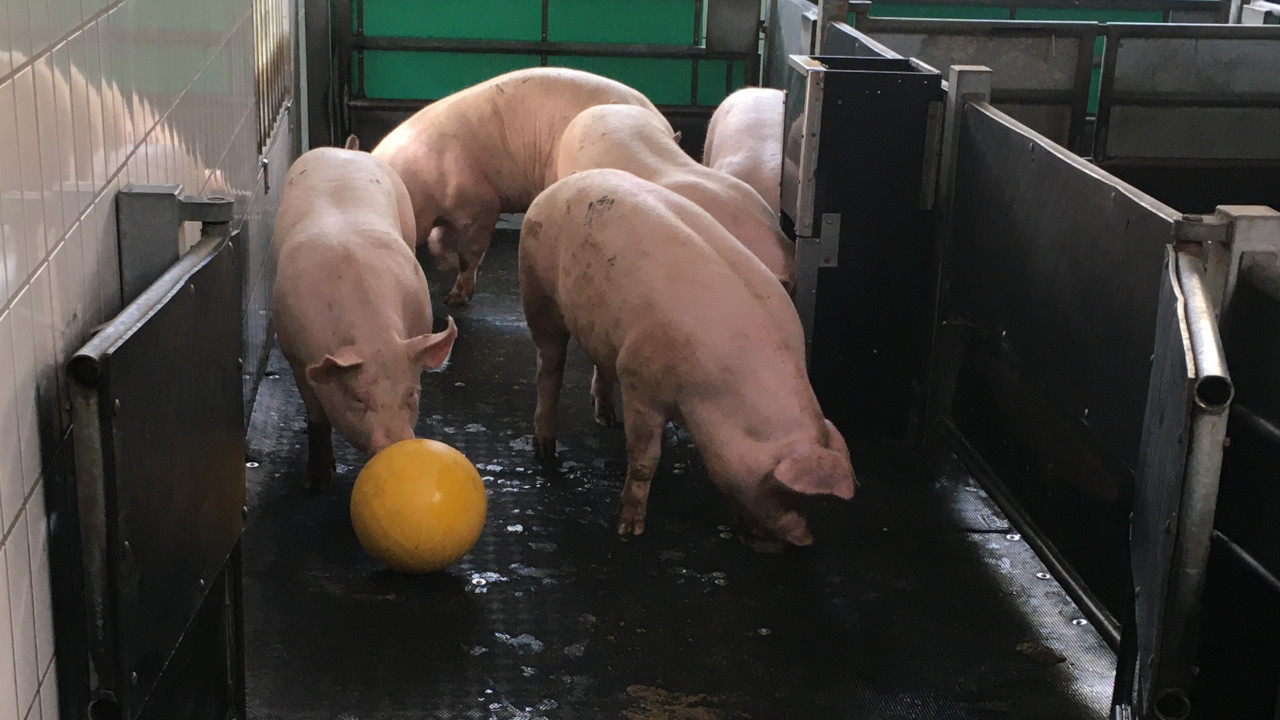By understanding behavioural and physiological needs of pigs, inspectors and business operators can differentiate between ‘normal coping behaviour’ of pigs in slaughterhouses, or behaviour that indicates prevalence of animal welfare issues. Concerning animal-human interactions, e.g., pigs should be handled as sentient beings, thus respecting their behavioural needs and the stress they are coping with on the day of slaughter. The layout and construction of lairage should encourage pigs to move freely within lairage passageways and races to the stunning area.
In EURCAW-Pigs' Review on arrival and lairage management at pig slaughterhouses, guidance and recommendations to improve the welfare pre-slaughter are given for each of three key areas:
Arrival management
Arrival management and unloading can be improved by strict management for trucks upon arrival in respect to the schedule and the number of pigs being delivered, thereby shortening waiting times of pigs on vehicles. If trucks are not able to unload immediately, e.g., elevating roofs and continuing mechanical ventilation must be ensured. If trucks have to wait at the premises of the slaughterhouse before unloading and have no means of artificial ventilation, the slaughterhouse must provide protected areas and cooling (e.g. ventilated halls) and/or fans.
Handling and moving pigs in lairage
To improve handling and moving, pigs should be moved applying as little pressure as possible. Handlers need to be trained accordingly and hold a certificate of competence. The layout and construction of lairage should encourage pigs to move freely within lairage passageways and races to the stunning area. The size of groups being moved, ramps for unloading, the layout of lairage, lighting management, surfaces of floors, the level of noise and airflows and handling of animals are significant for pigs’ ease of movement.
Lairage and comfort around resting
The purpose of lairage pens in slaughterhouses is to give pigs a chance to rest following arrival to the slaughter plant. Lairage can have a positive effect on a pig’s physical and mental state before slaughter, provided that familiar pigs in groups are maintained, and pigs have enough space to lie in half lateral recumbency, preferably full recumbency with higher temperatures.
In the next section, welfare indicators are described, helping to identify welfare issues.
Source photo: ©EURCAW-Pigs

